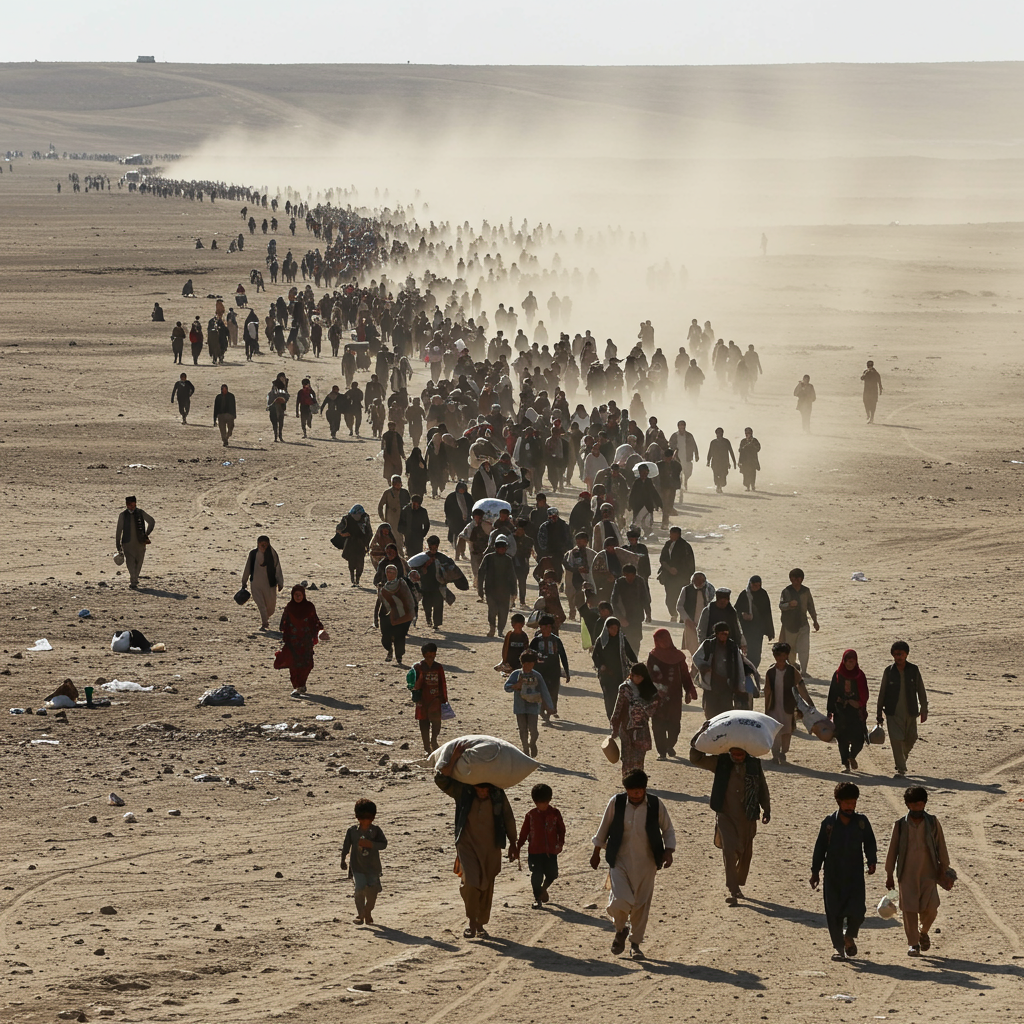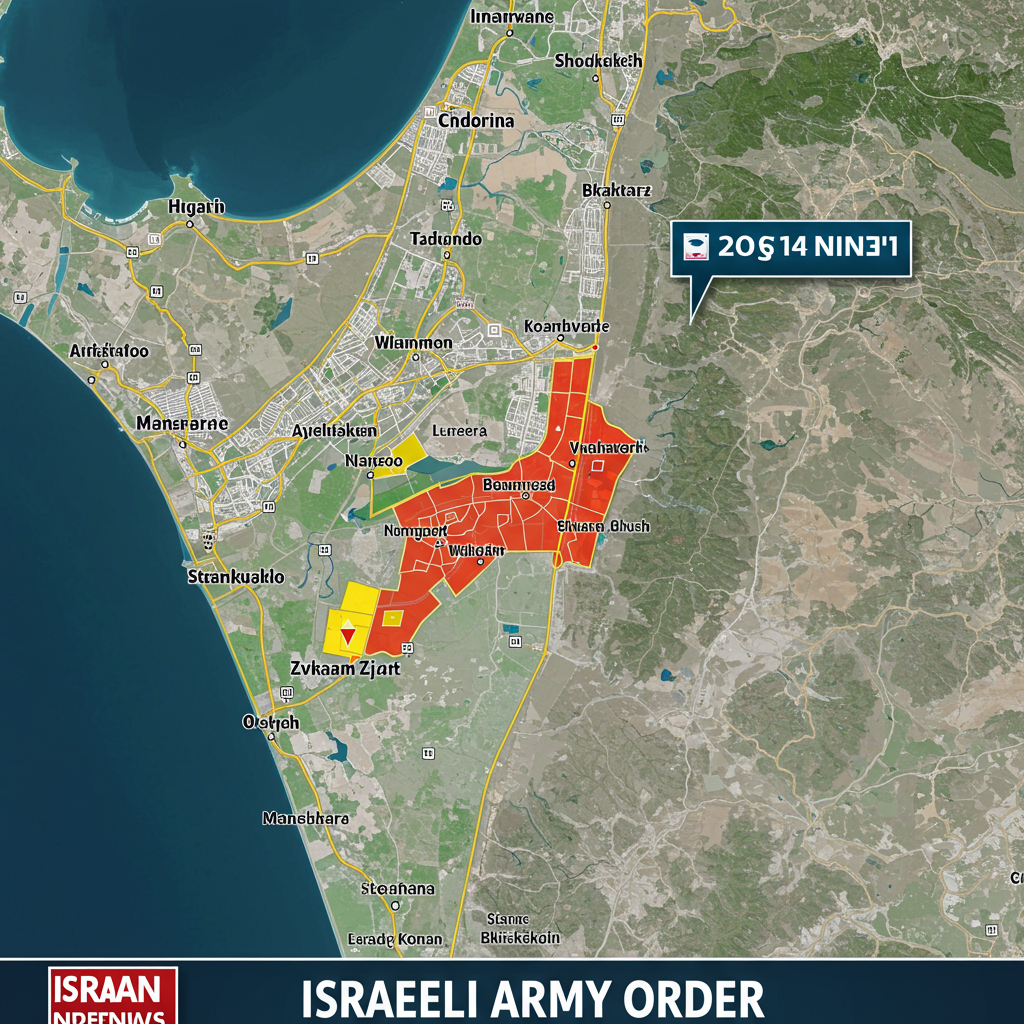A deepening humanitarian crisis is unfolding as neighbouring Iran and Pakistan intensify campaigns forcing large numbers of Afghan nationals to return to their home country. According to figures from the U.N. refugee agency, UNHCR, at least 1.2 million afghans have been compelled to leave the two nations this year alone. This massive scale of repatriation is straining an already fragile Afghanistan, which faces severe economic hardship and a humanitarian emergency. The sudden influx risks further destabilizing communities ill-equipped to absorb such a large, vulnerable population.
Since late 2023, both Iran and Pakistan initiated separate, aggressive efforts targeting foreigners they claimed were residing illegally within their borders. These governments imposed strict deadlines for voluntary departure, warning of deportation for those who failed to comply. While officials in Tehran and Islamabad deny specifically targeting Afghans, who have historically fled their homeland due to decades of conflict, widespread poverty, or the current rule by the Taliban, the impact disproportionately affects Afghan refugees and migrants.
Forced Returns Surge Amidst Humanitarian Crisis
The sheer number of returns this year highlights the escalating pressure on Afghan communities abroad. The UNHCR reports that over half of the 1.2 million individuals arriving back in Afghanistan originated from Iran. This surge followed a deadline set by the Iranian government around March 20 for Afghans to leave voluntarily. Official figures indicate Iran has deported more than 366,000 Afghans this year, a total that includes both officially registered refugees and others in similar precarious situations.
Iran’s efforts have been particularly intense recently. The pace of deportations quickened significantly in the weeks leading up to a reported July 6 deadline for all undocumented Afghans to depart. UN data confirms that a staggering 230,000 Afghans left Iran in June alone. A single day, June 26, saw a peak with 36,100 Afghans crossing the border back into their country. Iranian authorities estimate that up to 2.5 million of the roughly six million Afghans residing in Iran lacked legal status before these recent expulsions began.
Pressures Mount in Neighboring Countries
The decision by Iran and Pakistan to ramp up deportations appears driven by a mix of domestic pressures. Economic instability, rising unemployment, and resource scarcity within both host nations have contributed to shifting political priorities regarding migrant populations. In Iran, local complaints about the increasing presence of Afghans have been reported. Unverified accusations have even emerged in Iranian media outlets, alleging some Afghan refugees were spying for Israel, particularly in the wake of recent tensions, although these claims lack independent confirmation and have been challenged by some Iranian voices who defend the Afghan community.
Pakistan has also maintained a firm stance. The country set a June 30 deadline for approximately 1.3 million Afghans to leave. Pakistan’s stated objective is to expel a total of three million Afghans throughout the year, signaling a significant shift in policy for a nation that has hosted millions of Afghan refugees for decades. Human rights groups have criticized Pakistan’s approach, citing reports of mass detentions and forced evictions impacting Afghan families. Similarly, many Afghans returning from Iran have reported experiences of harassment, arrest, and deportation often carried out with minimal prior notice or legal process.
The Dire Reality for returnees in Afghanistan
The conditions awaiting these returning Afghans are starkly challenging. They arrive back in a country grappling with a severe humanitarian collapse. Over half of Afghanistan’s population already depends on international aid for survival. However, opposition from the Taliban authorities to certain policies implemented by non-governmental organizations, coupled with significant cuts in global funding, are severely constraining the ability of aid agencies to provide essential services. This has led to reductions in vital areas like education and healthcare.
Returnees often reach the border with scant belongings, exhausted from difficult journeys, hungry, and profoundly scared about their uncertain future. For many, particularly younger generations born abroad, Afghanistan is a land they have never known. Arafat Jamal, the UNHCR representative in Kabul, underscored this, stating that families are being uprooted once again, facing immense vulnerability upon arrival.
Women and Girls Face Heightened Fears
A particularly acute concern is the situation of women and girls returning under Taliban rule. Since regaining power in 2021, the Taliban have imposed widespread restrictions on women’s rights, severely limiting their freedom of movement, access to education, and opportunities for employment. For women and girls who grew up in more liberal environments in Iran or Pakistan, the prospect of living under these restrictions is terrifying. Personal accounts highlight this fear; one young woman, born and raised in Iran, shared her terror at facing a future where she cannot continue her education, a fundamental right denied to many girls in Afghanistan. Another man recounted being arrested in Iran and deported, leaving behind his three sick children with no way to contact them or ensure their well-being.
The sudden influx of over a million people is placing immense pressure on Afghanistan’s already strained infrastructure and limited resources. Existing services, including healthcare, housing, and education, are struggling to cope with the sudden population increase. Many returnees are ending up in temporary camps or informal settlements near border areas, facing harsh conditions and limited access to basic necessities like clean water or adequate shelter. Humanitarian agencies estimate that over 70% of these returnees require urgent assistance, including food, medical care, and shelter.
Taliban Response and Aid Efforts
Taliban authorities have publicly encouraged Afghan refugees to return. High-ranking officials, including Prime Minister Mohammad Hassan Akhund, have issued messages promising safety and amnesty for those who fled after the previous government collapsed. They urge Afghans to return to their “ancestral land” and live in peace. Ministerial delegations have reportedly visited border areas, meeting returnees and pledging swift action to address urgent needs and facilitate reintegration.
Specific assistance measures reported by the Taliban include initial provisions of food, temporary accommodation, and access to healthcare upon arrival. Returnees are also reportedly receiving a small cash allowance, approximately $28.50, and free transportation to their home provinces. Authorities state that designated camps are housing individuals until permanent housing can be arranged, mentioning plans for residential townships under construction in every province. However, the scale of the need far outstrips the available resources, and significant funding gaps remain for humanitarian organizations attempting to support the returnees amidst the broader crisis.
The mass return of Afghans from neighboring countries represents a significant and growing regional crisis. While host countries point to domestic pressures, the sudden expulsion of such a large population without adequate support structures in place poses a severe challenge to Afghanistan’s stability and humanitarian outlook. International organizations are calling for urgent regional cooperation and sustained international financial and diplomatic support to address both the immediate humanitarian needs of the returnees and the long-term challenges of their reintegration into a country already in crisis. Ensuring that any future repatriations are voluntary, safe, and conducted with dignity and due process is crucial to prevent further suffering and potential instability.
Frequently Asked Questions
How many Afghans are being forced to leave Iran and Pakistan?
According to the UNHCR, at least 1.2 million Afghan nationals have been compelled to return from Iran and Pakistan this year. Over half of these returns came from Iran, particularly after a March 20 deadline. Iran has officially deported over 366,000 Afghans this year. Pakistan has set a June 30 deadline for about 1.3 million Afghans and aims to expel a total of 3 million this year.
What challenges do Afghan returnees face back in Afghanistan?
Returnees arrive with few belongings, often exhausted, hungry, and fearful. They face a country in a severe humanitarian crisis where over half the population needs aid. Aid agencies face funding cuts and operational restrictions. Many returnees lack housing, struggle to find work, and strain existing limited services like healthcare and education. Women and girls face particular fear due to Taliban restrictions on their rights.
Why are Iran and Pakistan implementing mass deportations of Afghans?
Both governments cite the presence of “illegal foreigners” and domestic pressures such as economic instability, unemployment, inflation, and national security concerns. They set deadlines for voluntary departure, threatening deportation for those who remain. While denying specific targeting of Afghans, their policies have resulted in mass expulsions despite the dire conditions awaiting returnees in Afghanistan.




